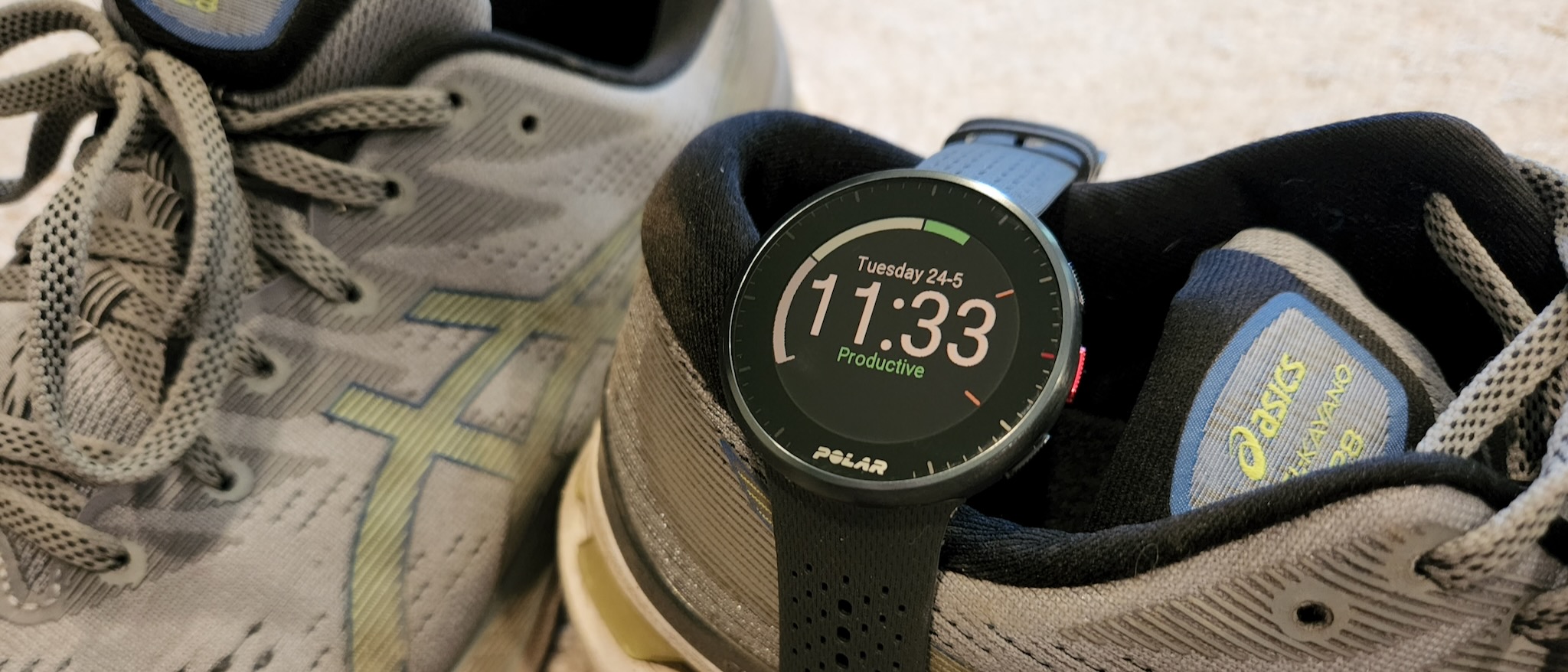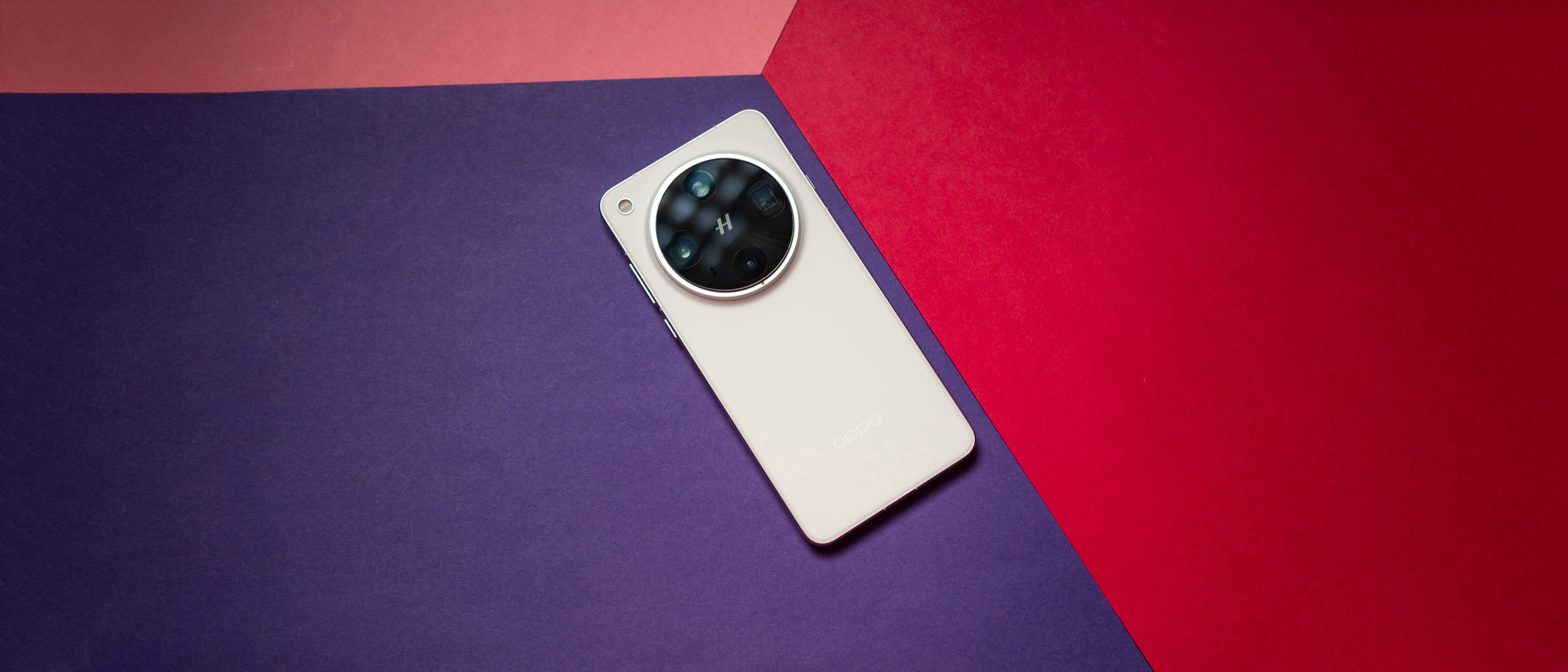Android Central Verdict
The Polar Pacer Pro is tailor-made for runners or triathletes looking to improve their splits with a wealth of free, colorful data. It has a comfortable design with breathable strap, a decently bright, colorful MIP display with simple button nav, and suggested workouts based on a thorough profile of your current fitness. It's just missing a few sensors and features you'd get on other fitness smartwatches.
Pros
- +
Fantastic amount of free running data
- +
Reliable HRM results w/ altimeter
- +
Fast performance
- +
Consistent 7-day battery w/ 35 GPS hours
- +
Running Performance Test
Cons
- -
No SpO2 sensor or gyroscope
- -
Dim MIP display with thick bezel
- -
Little watch face customization
Why you can trust Android Central
I've tested plenty of watches from Garmin, Fitbit, Coros, Amazfit, and other brands, but hadn't tested a Polar until I received the Pacer Pro earlier this month. Thus, I can't say for certain whether Polar's quality is on the rise or if its mid-tier running watches have always been this good; it apparently made some major design and performance upgrades over the identically-priced Vantage M2 from last year. Whatever the case, the Polar Pacer Pro is a watch that should make runners sit up and take notice.
Among the best running watches, we'd previously chosen the Polar Vantage V2 thanks to its abundance of training data through the Polar Flow app. But the Pacer Pro offers most of the same features and a similar battery life for $200 less, making it more accessible to frugal runners looking to get serious about picking up the pace.
Like Garmin Forerunner models, the Pacer Pro offers a wealth of post-workout stats and training recommendations while keeping track of your body's current readiness, all for free. And it does so in a way that's arguably more accessible and straightforward than Garmin — at least in some cases. The only major downside here is that the Pacer Pro is missing some sensors and health-tracking tools that are commonplace on rival brands; but that won't be a deal-breaker if what you really need is a "running watch" rather than a "fitness watch."
Polar Pacer Pro: Price, availability, and differences from Polar Pacer
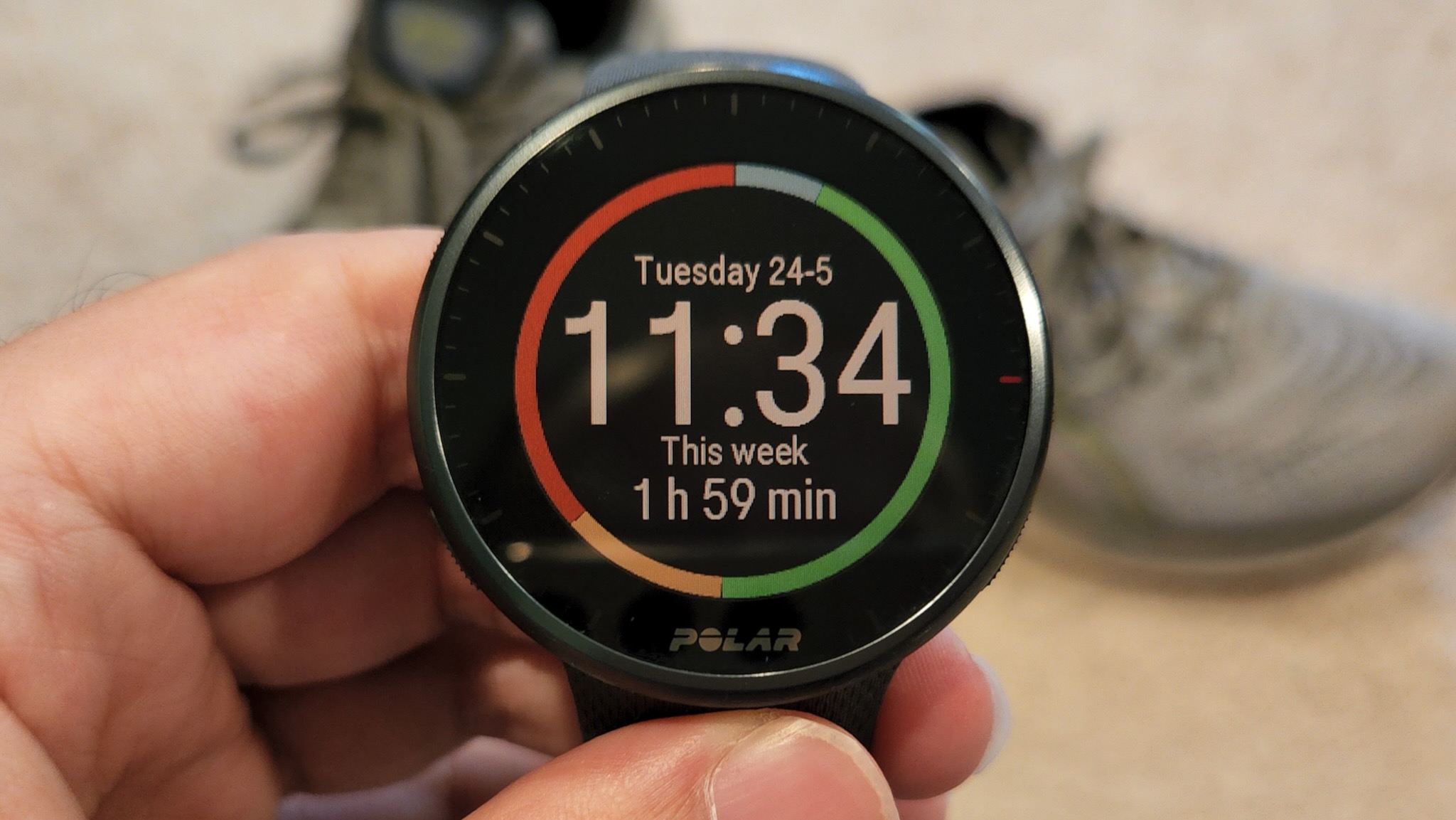
Released on April 13, 2022, the Polar Pacer Pro costs $300/ £260 and is available on Amazon, Walmart, and Polar, along with some smaller fitness gear websites. It ships in four colors: Carbon Gray, Snow White, Midnight Blue, and Autumn Maroon.
On that day, Polar also released the Polar Pacer at $200 / £170 as an entry-level alternative. Both the Pacer and Pacer Pro are marketed towards runners, but the Pacer is better for couch-to-5K or casual runners, while the Pacer Pro adds a few key features for "seasoned runners" looking to improve their times.
In terms of the Polar Pacer vs. Pacer Pro, both watches have similar designs and MIP displays, though the Pro has a Shift Adapter for a quicker band swap and an Aerospace aluminium bezel. Both have WR50 water resistance, but only the Pro has MIL-STD-810G durability against falls and environmental damage.
In terms of running metrics, only the Pro has turn-by-turn guidance including Back to Start, running power measurements via a barometer, Hill Splitter tracking, and a Running Performance Test for better training recommendations. But the Polar Pacer does have the same battery life, same Precision Prime GPS, same CPU speeds, wellness tools, FitSpark workout recommendations based on your fitness level, and the same Polar Flow app tools.
Our Polar Pacer Pro review will help you decide if those other features are worth the $100 difference.
Polar Pacer Pro: What I liked
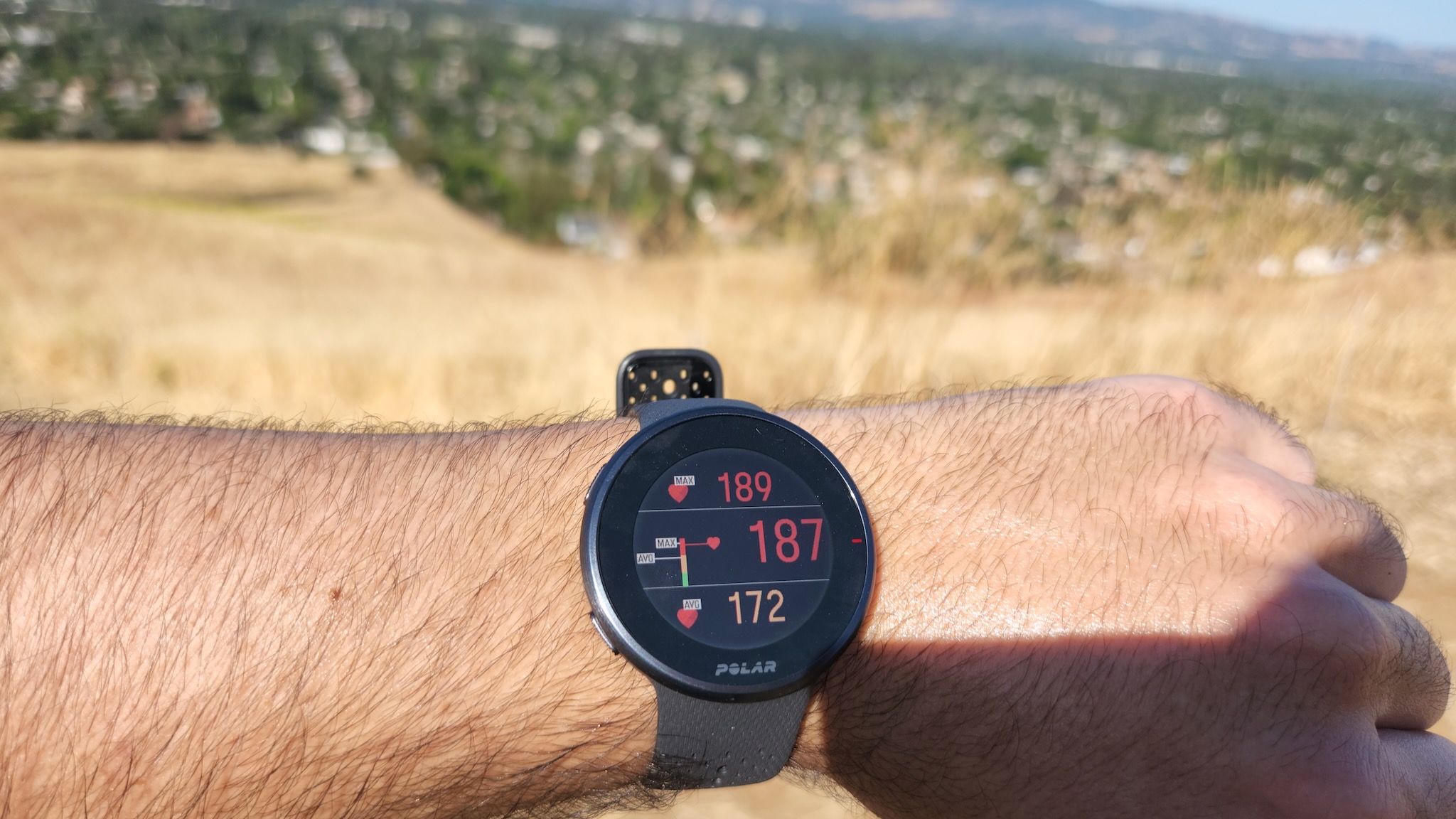
To test the Polar Pacer Pro, I ran six times wearing it on my left wrist and the Garmin Instinct 2 Solar on my right to compare HRM and GPS results, since I'd already found the latter gave very accurate results during my review.
Purely in terms of distance, each matched one another perfectly in GPS tracking, hitting mile markers nearly within the same stride. The maps themselves showed Polar's tracking to be slightly more inaccurate, with my path sometimes drifting into ongoing traffic or canals where Garmin mostly stayed on path. But I don't think that'll matter to 99% of runners when they'll still get an accurate distance to compare against their heart rate stats.
HRM averages were quite close, with Polar's measuring just 1 bpm lower than Garmin in 5 runs and matching it in the sixth. Whether it's Garmin or Polar that's on point here, it's clear the Pacer Pro's Precision Prime detector — which penetrates your skin with 10 LEDs at different wavelengths, then picks up the reflection with 4 light detectors — is just as consistent as Garmin's newest Elevate 4.0 sensor.
| Polar Pacer Pro | Specs |
|---|---|
| Display | 1.2-inch Memory-in-Pixel (MIP) non-touch (240x240) |
| Performance | 200MHz CPU, 5MB Memory, 32MB Storage |
| Materials | Plastic Case, Aluminium bezel |
| Protection | Gorilla Glass, WR50, MIL-STD-810G |
| Dimensions | 45 x 45 x 11mm |
| Weight | 41g/1.45oz (23g/0.81oz without band) |
| GPS | Built-in GPS, Glonass, Galileo, QZSS, Assisted-GPS |
| Sensors | Precision Prime HRM, Barometer, Compass, Accelerometer |
| Battery | 273 mAh, 35 hours GPS, 7 days in watch mode |
Wearing both also reminded me that fitness watches aren't supposed to weigh down your wrist. Compared to the hefty Instinct 2, the Pacer Pro feels blissfully light, though 41g (with band) is fairly standard. It offers a military-grade protection rating against falls and extreme conditions, but is less likely to dig into my skin while worn overnight.
I also noted the Pacer Pro has less lag compared to Garmin watches I've tested; try to start a workout, for example, and the Polar will slide smoothly to the sport mode screen while the Instinct 2 processes the input for a couple seconds. Polar also claims it's 2X faster processing and 7X more RAM than the Vantage M2 from last year, though I can't confirm that. I can only say the performance fits the bill for the available features.
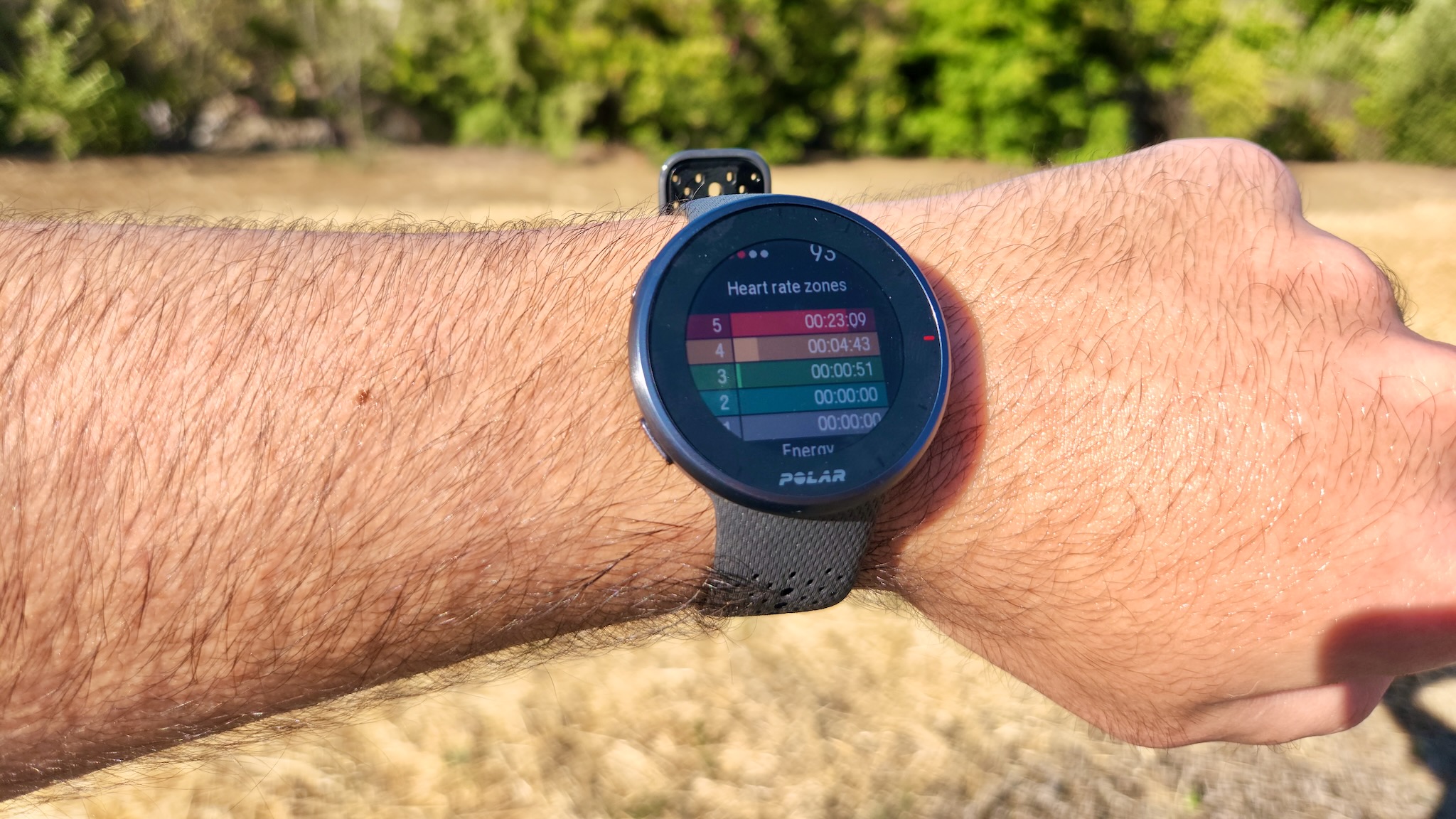
Some reviewers would find the lack of a touchscreen problematic. I don't! I'm on record saying buttons beat touchscreens for fitness because they're more reliable than sweaty taps. Polar made its UI very easy to navigate with the 5 buttons available.
Where other watches bury data in menus I can't find, Polar keeps things simple and intuitive.
The bottom-left button pulls up a menu of features like Serene breathing, Strava Live Segments, Fueling reminders, and the Settings menu. The upper- and bottom-right buttons scroll up and down between options and data. Click the red middle-right button to select an option, or the bottom-left button to go back. You can also hold the red button down to pull up workout options, while the top-left button activates the backlight with a tap or a screen lock by holding it down.
Where other watches bury data in menus I can't find, Polar keeps things simple and intuitive, which I appreciate. Rather than rely on custom watch faces to decide what data you see, you can simply scroll up and down and decide which data — current heart rate, weather, cardio load, nightly recharge, daily activity goal progress, and a few other options — appear in the ring around your current time and date.
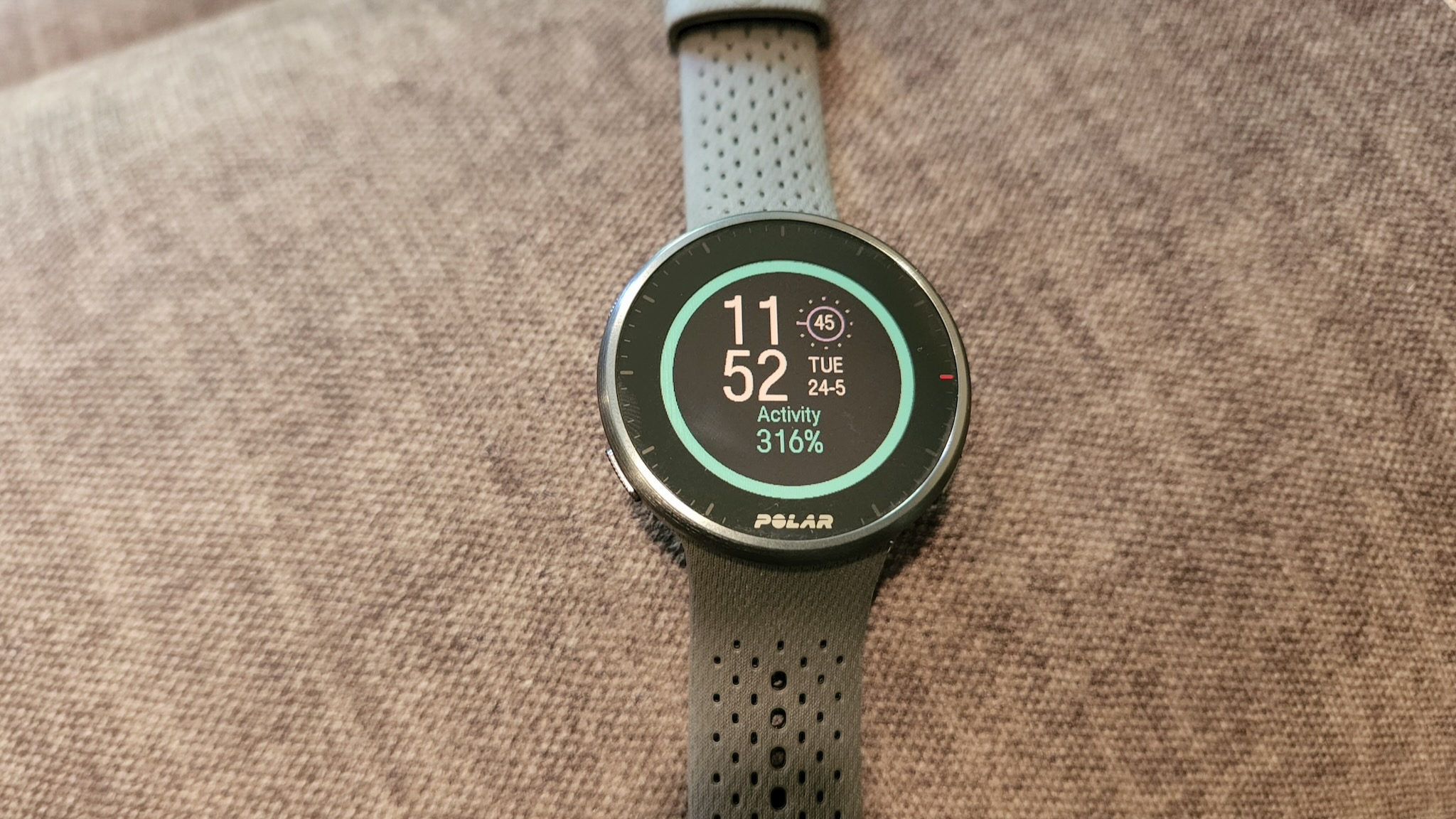
Once you start a workout, the display will show your heart rate color-coded to its intensity, distance, current pace, and duration. But you can create custom exercise faces for each sports profile depending on what metrics you want to see at a glance, including lap time, ascent/descent, cadence, Pace ZonePointer, and so on.
You can then add "Additional views" to scroll through during a workout, such as Back to Start, Compass, Hill Splitter, Strava segments, and so on. You can even customize your heart rate zones if you're an athlete whose heart differs from the norm.
I enjoy how the Polar Flow app makes it easy to remove the info you don't care about on one sports profile, then create a new profile for specific circumstances. My standard Running profile ignores altitude because I mostly train in a flat area; my custom Race Running profile shows both lap and average pace because I want to see how my mile pace impacts my expected finish time; and my Treadmill Running face obviously focuses more on health stats than GPS-based ones.
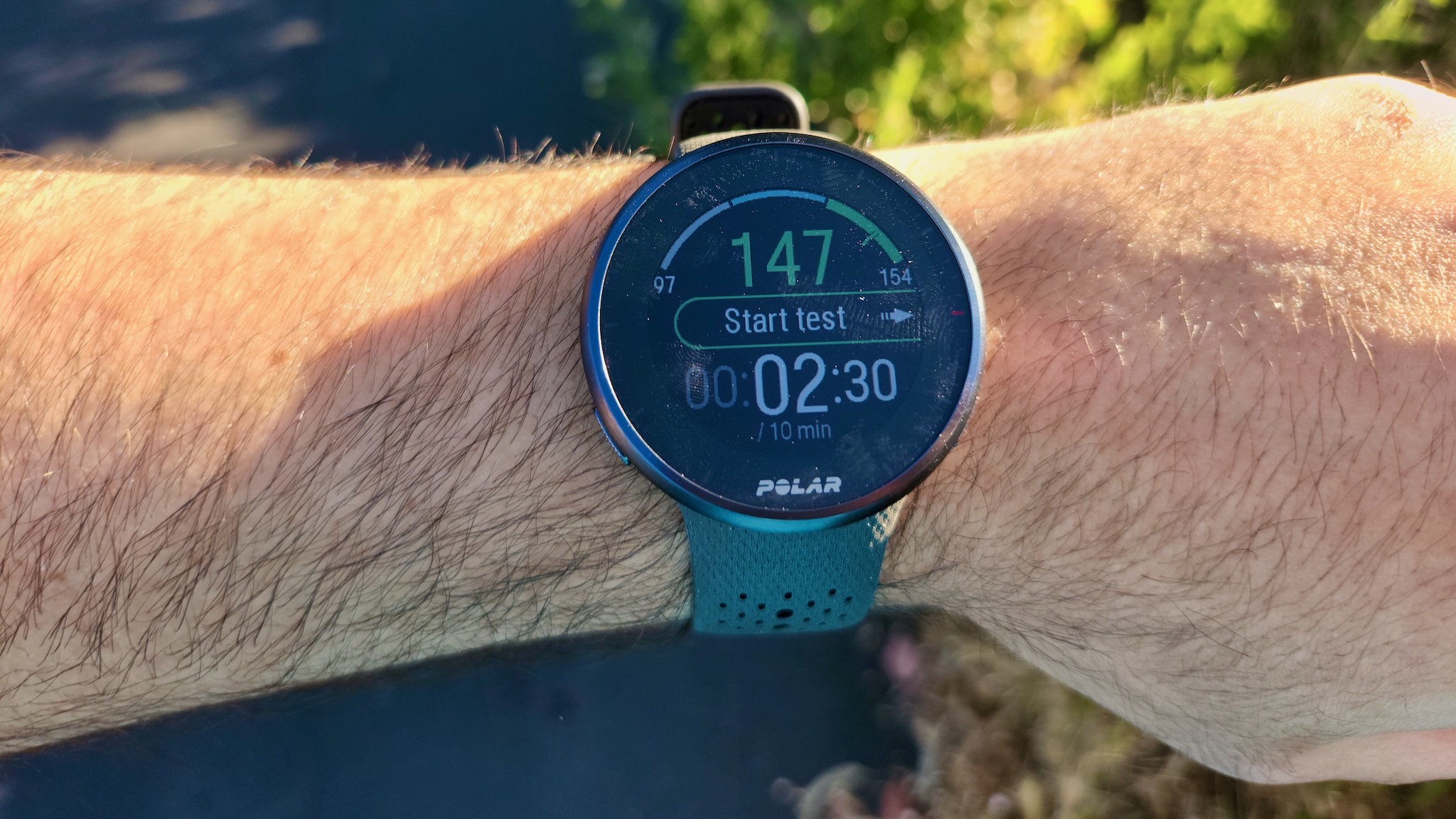
To get up-to-date data on your current fitness level, Polar Pacer Pro offers a Running Performance test. It starts you off jogging for ten minutes, then has you start to run at a set pace that slowly gets faster and faster. Once you can no longer keep up with the pace, the test will end and you'll receive a VO2 Max score.
The barometric altimeter enables the Running Performance Test, giving Polar a better picture of your fitness level when it recommends daily workouts.
Polar uses that, along with your tracked workouts, to determine your fitness level, and recommends you retake the test every few months. It's a neat tool, once that seemed to improve the accuracy of my workout results in the aftermath. If I downgraded to the Polar Pacer, I'd certainly miss both the test and the barometric altimeter for accurate effort results on hills.
Collecting all this data, Polar then tells you daily whether you are currently Detraining, Maintaining, Productive, or Overexerting in one watch view. In another, it'll give you your daily FitSpark cardio workout recommendation based on your current energy level and training load, plus an optional Strength or Supportive workout once you've finished your daily run.
Again, where other watches reserve all this for the mobile app, Polar lets you see all this at a glance on the watch, which I appreciate.
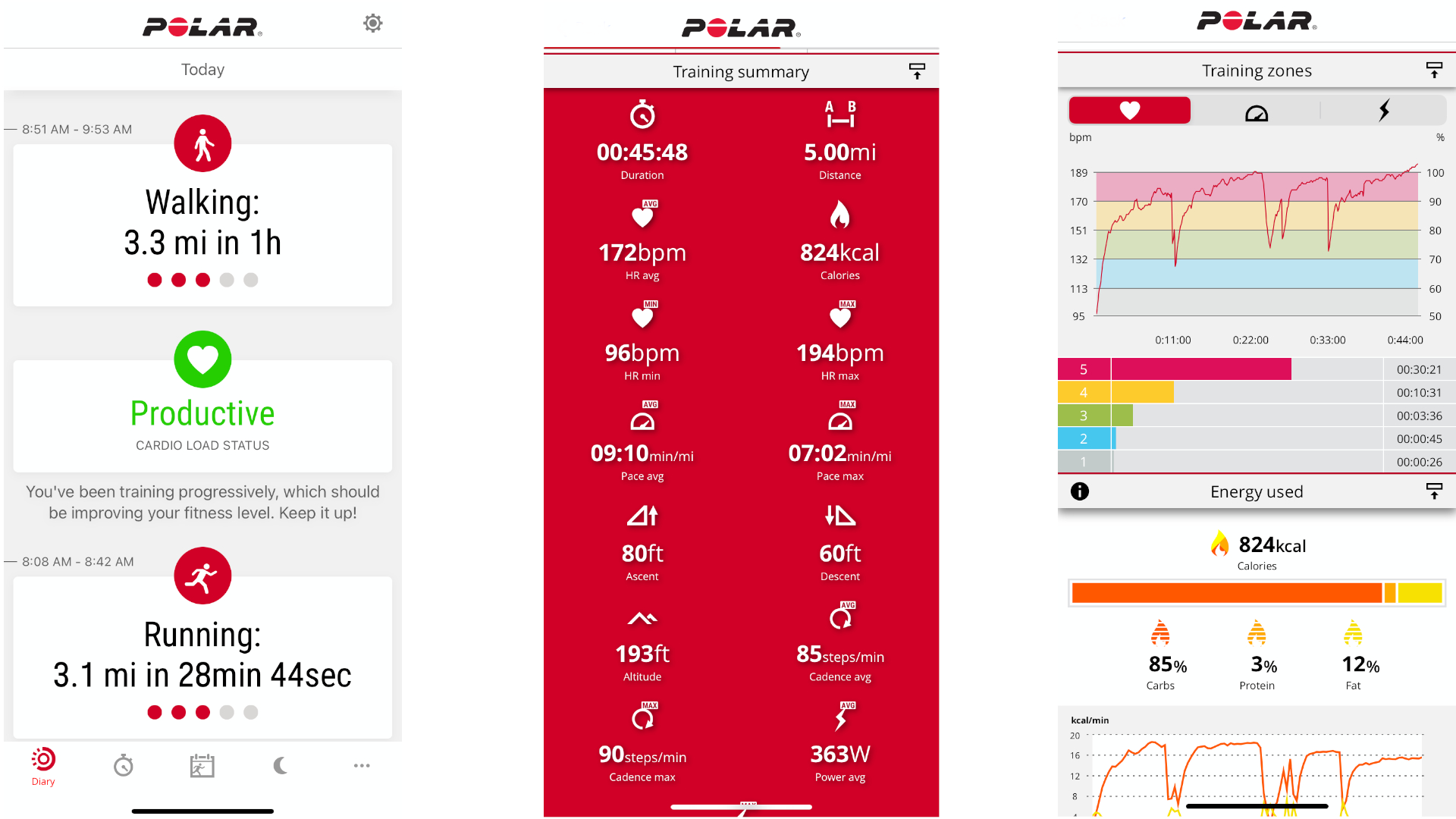
And I say this despite liking the Polar Flow app: workout data is easy to find and split into pleasingly colorful segments, and you'll find "i" information logos next to categories if you don't understand what the metric signifies. That's helpful for when you have time to look through all that, but the Pacer Pro (with built-in GPS) can guide you even if you leave your phone at home.
Polar doesn't offer too many side features on the watch. I do enjoy using Serene, a simple breathing app that animates oxygen entering and leaving your body and grades how long you spend in the best breathing zones. You can also set reminders to drink water and stay hydrated every hour, which I've been using to double as a movement reminder.
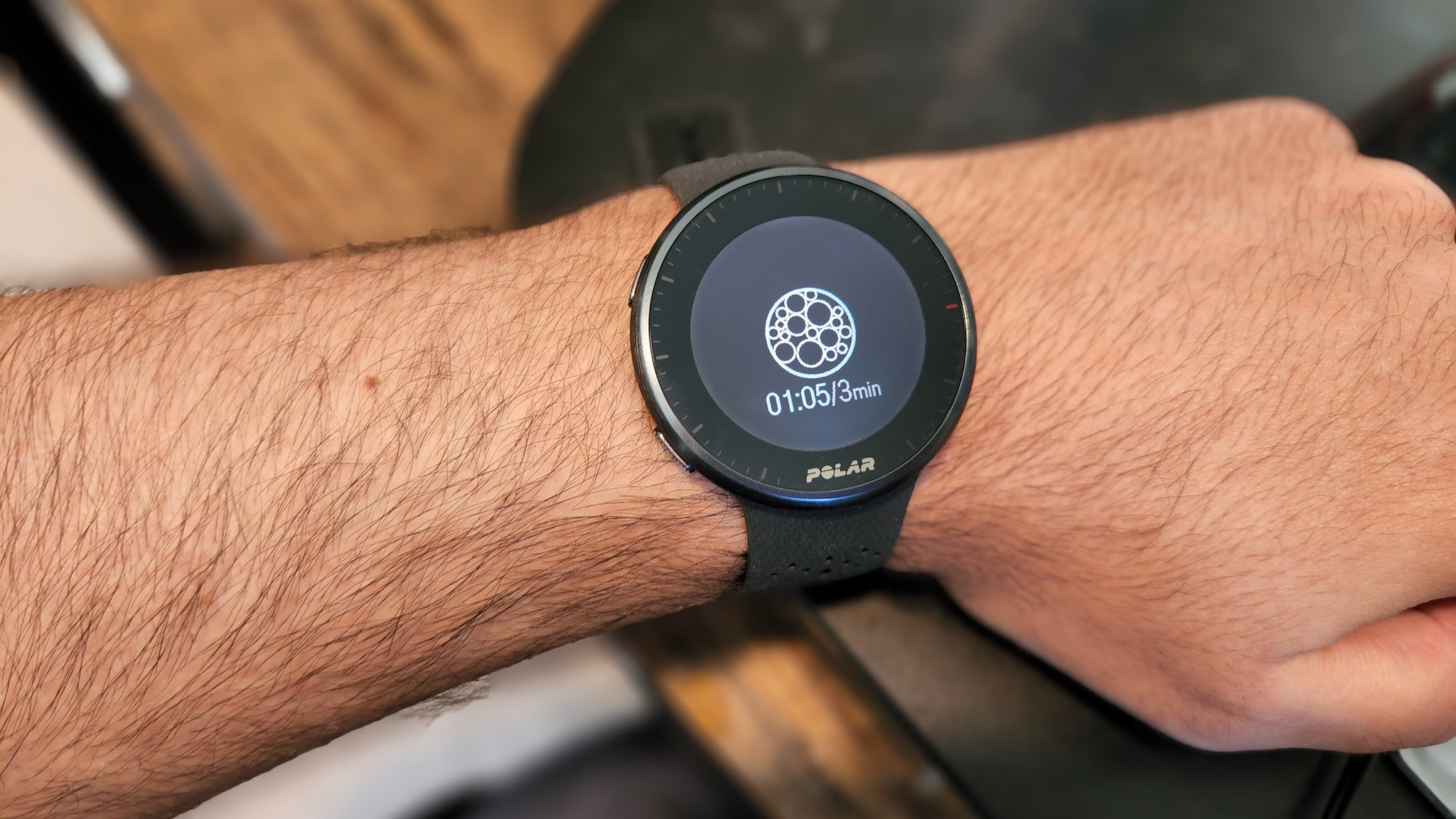
In terms of battery life, Polar estimates the watch hits 35 GPS hours across a 7-day period. If those numbers confuse you, it's because most running watches don't offer nearly that much GPS tracking but may last days longer in standard smartwatch mode. Basically, the Polar Pacer Pro drains pretty regularly from standard heart rate and sleep tracking, which isn't ideal, but tracked workouts won't increase the battery drain as much as other brands.
You're not going to hit the 35-hour estimate unless you run or cycle 5 hours a day every day, or take consistently long mountain hikes. But the perk here is that you really should only need to charge it once a week even when you're physically active, at least based on my past few weeks of testing.
Polar Pacer Pro: What you won't like
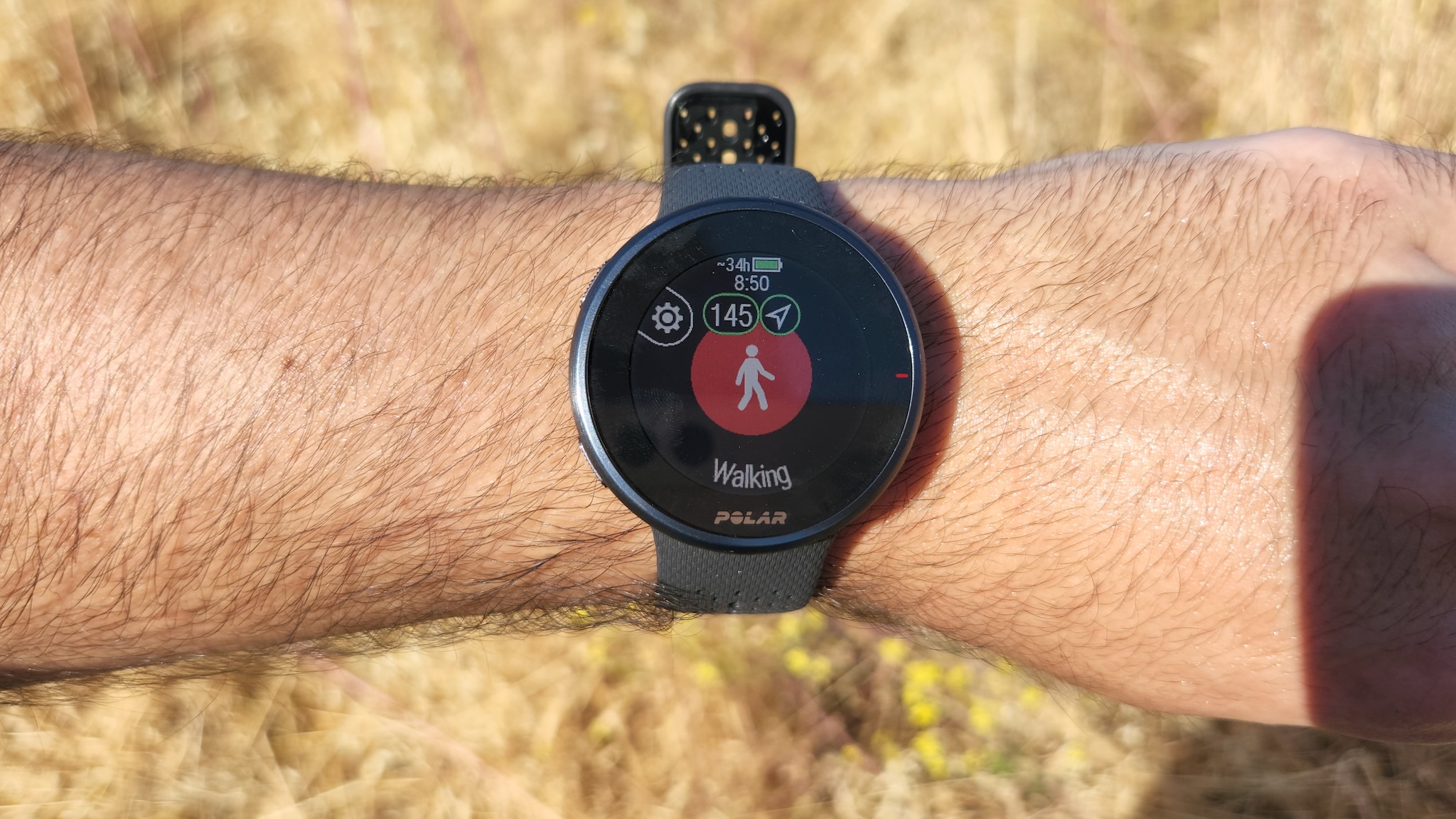
Despite being a "Pro" device, the Polar Pacer Pro lacks some health sensors you'll find on comparable or cheaper trackers, including blood oxygen (SpO2) monitoring, a temperature sensor, an ECG sensor, or an EDA sensor. Nor will you get AFib monitoring, menstrual cycle tracking, stress tracking.
More expensive models like the Polar Vantage V2 lack all these, so at least you're not being upsold. Polar simply focuses more on fitness metrics than health metrics or smartphone connectivity; if that's a concern, maybe consider a high-end Fitbit or a proper smartwatch instead.
Polar ignored a lot of common fitness smartwatch sensors and features to focus solely on running tools, for better or worse.
It also lacks a gyroscope and an ambient light sensor. I don't mind the missing ALS because I find most watches react too extremely to changes in light. But the missing gyroscope ensures you have to start tapping buttons to make the display more readable, and the watch will blithely exit your workout summary unless you keep scrolling because it doesn't have a way to tell you're still looking at it.
The watch's always-on display setting is very dim. I don't notice it often because the backlight remains on by default during workouts, making the display fully visible in sunny weather. But indoors, I find myself holding it close to my face to read or having to trigger the backlight unless I'm in a spot with good natural lighting. Anyone with poor eyesight may want to choose an AMOLED fitness watch like the Garmin Venu 2.
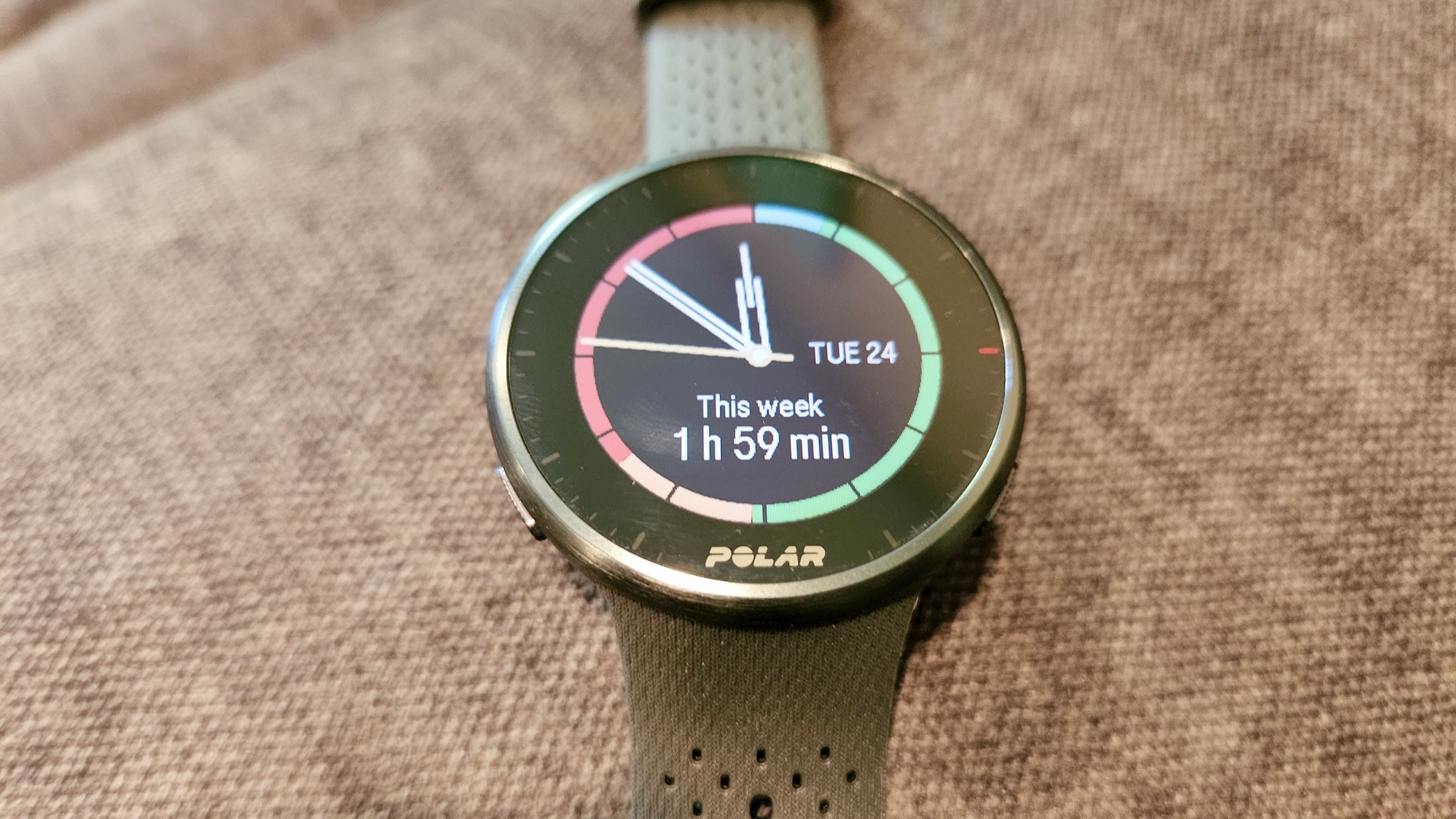
Generally speaking, I like the sleek, understated design of my Carbon Gray Polar Pacer Pro, especially the aluminum bezel around the edge. But the actual display bezel is surprisingly thick — and the 240x240 resolution a little low — compared to other MIP displays. It shouldn't prevent you from buying one, but it lacks the style of most AMOLED watches.
Laslty, because I'm less familiar with Polar Flow than Garmin Connect, I find some of the numbers like Training Load Pro ratings a little more difficult to parse. A 0-5 aerobic/anaerobic rating is easy to understand; I have no idea whether a 143 cardio load and 995 muscle load rating is as good as it could be. Nor do I know how many kcals I should try to burn off.
It's not bad to have this data. But when you compare your heart rate chart and battery graphs, they're going to look pretty much the same. The extra data won't necessarily help me, except for the psychological enjoyment of seeing how much hypothetical fat I burned off.
Competition
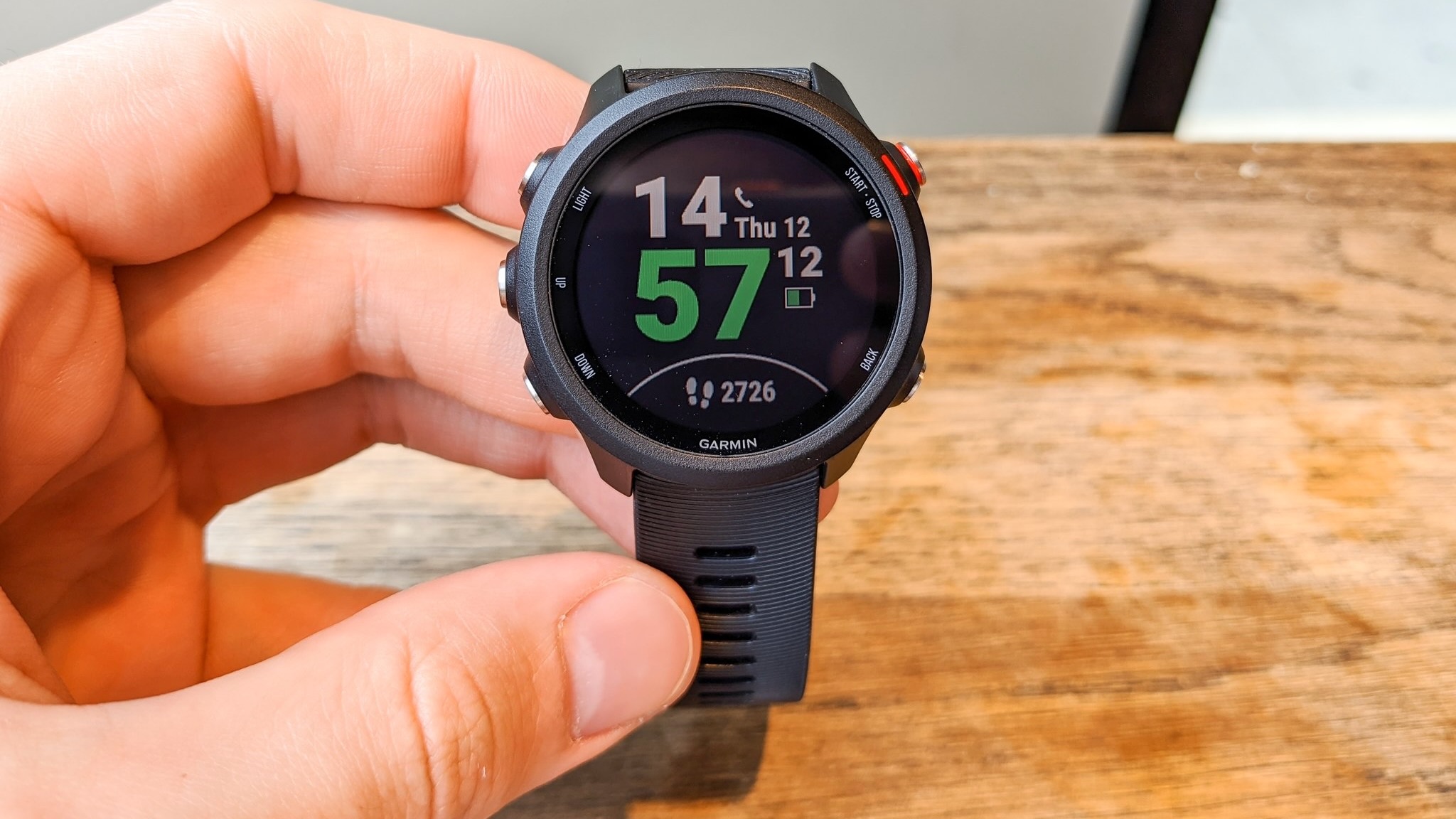
Serious athletes searching for a fitness smartwatch typically start their search with Garmin, and for good reason. Like Polar, Garmin offers training load and effect, recommended workouts and race pace estimations, and other metrics with no extra data fee. Many of the best Garmin smartwatches are more expensive, but you can find models like the Vivoactive 4 and Forerunner 245 for a similar price as the Pacer Pro.
The similarly-priced Forerunner 245 has a 7-day battery life (though only 24 GPS hours), daily suggested workouts and Garmin Coach, running form tips like cadence and stride, VO2 Max, training effect, suggested recovery time, Body Battery, and other similar tools to the Pacer Pro. It adds a Pulse Ox sensor but lacks an altimeter.
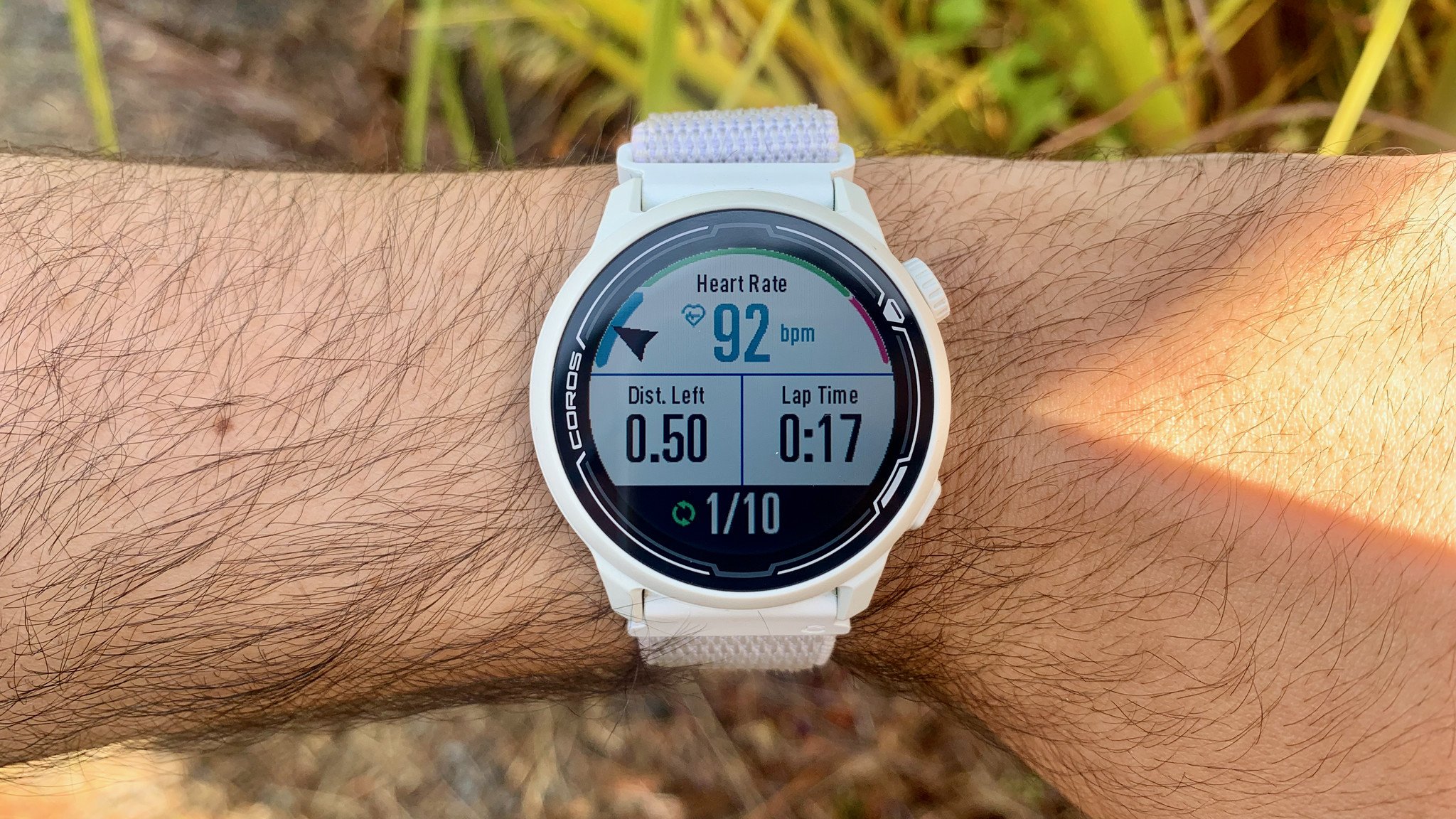
Another Garmin/Polar rival is Coros, and the Coros Pace 2 is one of my favorite running watches. It has an ultra-lightweight design, a 1.2-inch 240x240 display (sound familiar?), 30 GPS hours of tracking, button-based navigation, and free workout metrics through EvoLab. Despite its similarities, it only costs $200, about the same as the Polar Pacer; if price is an object with the Pro, the Pace 2 might feel like less of a compromise.
Lastly, you can always turn to Fitbit, which offers plenty of metrics across sports modes as well as more thorough health data via Fitbit Premium. The Fitbit Sense costs the same and comes with SpO2, ECG, EDA, and temperature sensors for a holistic look at your health, sleep, stress, and so on. It too can determine daily readiness for workouts. Unfortunately, you will have to pay monthly for Fitbit Premium, and it's not as runner-specialized as these other selections.
Polar Pacer Pro: Should you buy it?
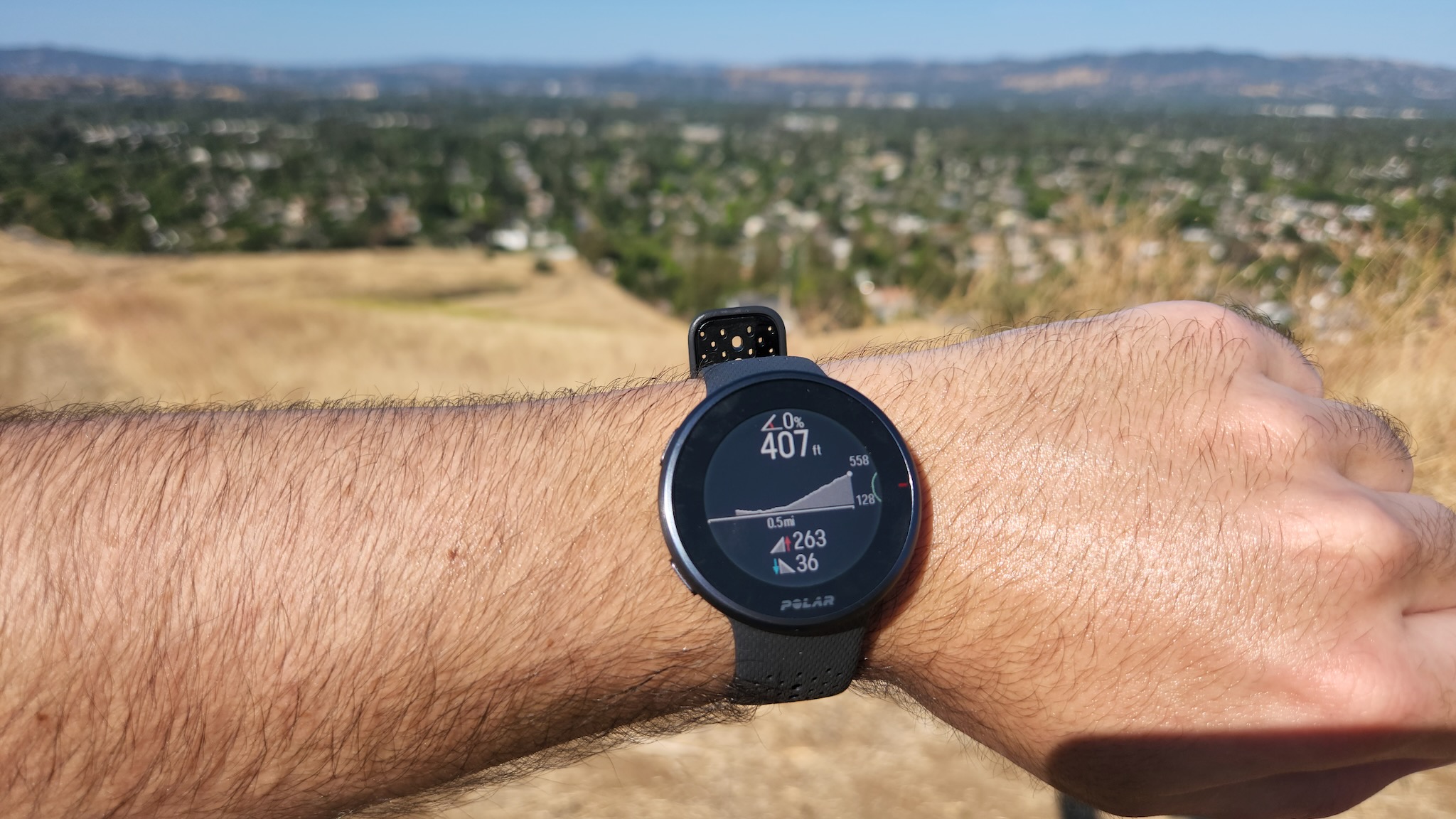
You should buy this if...
- You're serious about studying running data to get faster but tend to burn out or injure yourself while training.
- You don't want to pay monthly for that running data.
- You'd rather avoid frequent recharges.
You shouldn't buy this if...
- You want pulse ox or other health data too.
- You want to answer calls or speak to an assistant on your watch.
- You'd prefer a brighter and more pixel-rich display.
Based on my time with the Polar Pacer Pro, I'd recommend buying the Pro option even if the standard Pacer is tempting you — at least if you're dedicated to hitting the track or trail on a regular basis. For more casual runners using it to get healthy, you'd probably want to focus less on metrics; an Apple Watch Series 7 or Samsung Galaxy Watch 4 would offer basic tracking and much more health data.
The Polar Pacer Pro is an excellent running watch that holds up to scrutiny against similar fitness models. It isn't designed for health tracking, but you can certainly assume good running habits will keep your heart strong and reduce stress.
Offering thorough, accessible, complementary, and generally accurate workout data, Polar is calling out the Garmin Forerunner series with the Pacer Pro. Whether or not one is better than the other is a discussion for another time, but suffice to say that you're not getting a downgrade if you decide to switch.
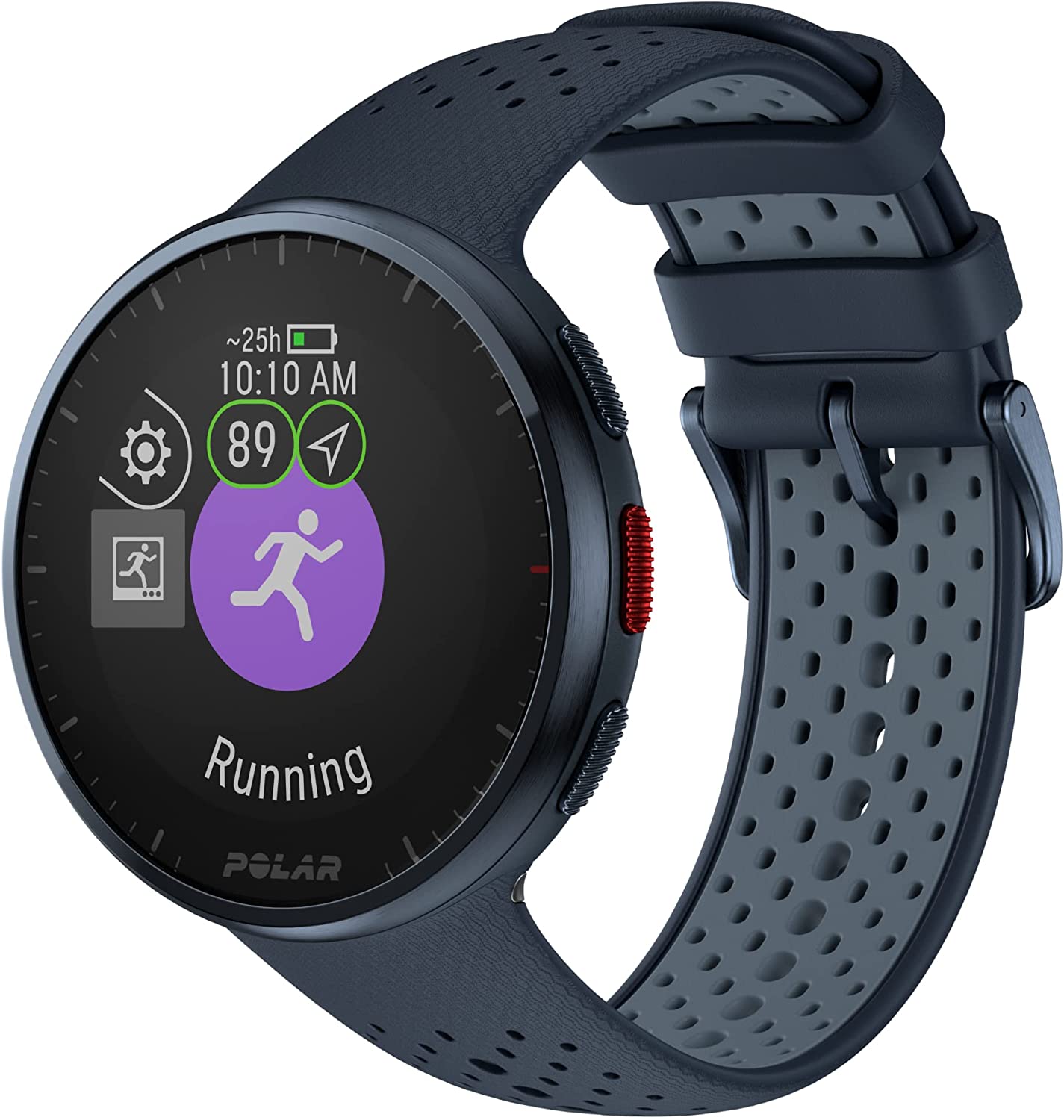
Data-driven fitness
The Pacer Pro tracks your heart rate in certain zones, energy burned from calories or fat, altitude, cadence, cardio and muscle load, power generated, VO2 Max, and (of course) pace. All the core running metrics you need to track your progress and improve over time.

Michael is Android Central's resident expert on wearables and fitness. Before joining Android Central, he freelanced for years at Techradar, Wareable, Windows Central, and Digital Trends. Channeling his love of running, he established himself as an expert on fitness watches, testing and reviewing models from Garmin, Fitbit, Samsung, Apple, COROS, Polar, Amazfit, Suunto, and more.
